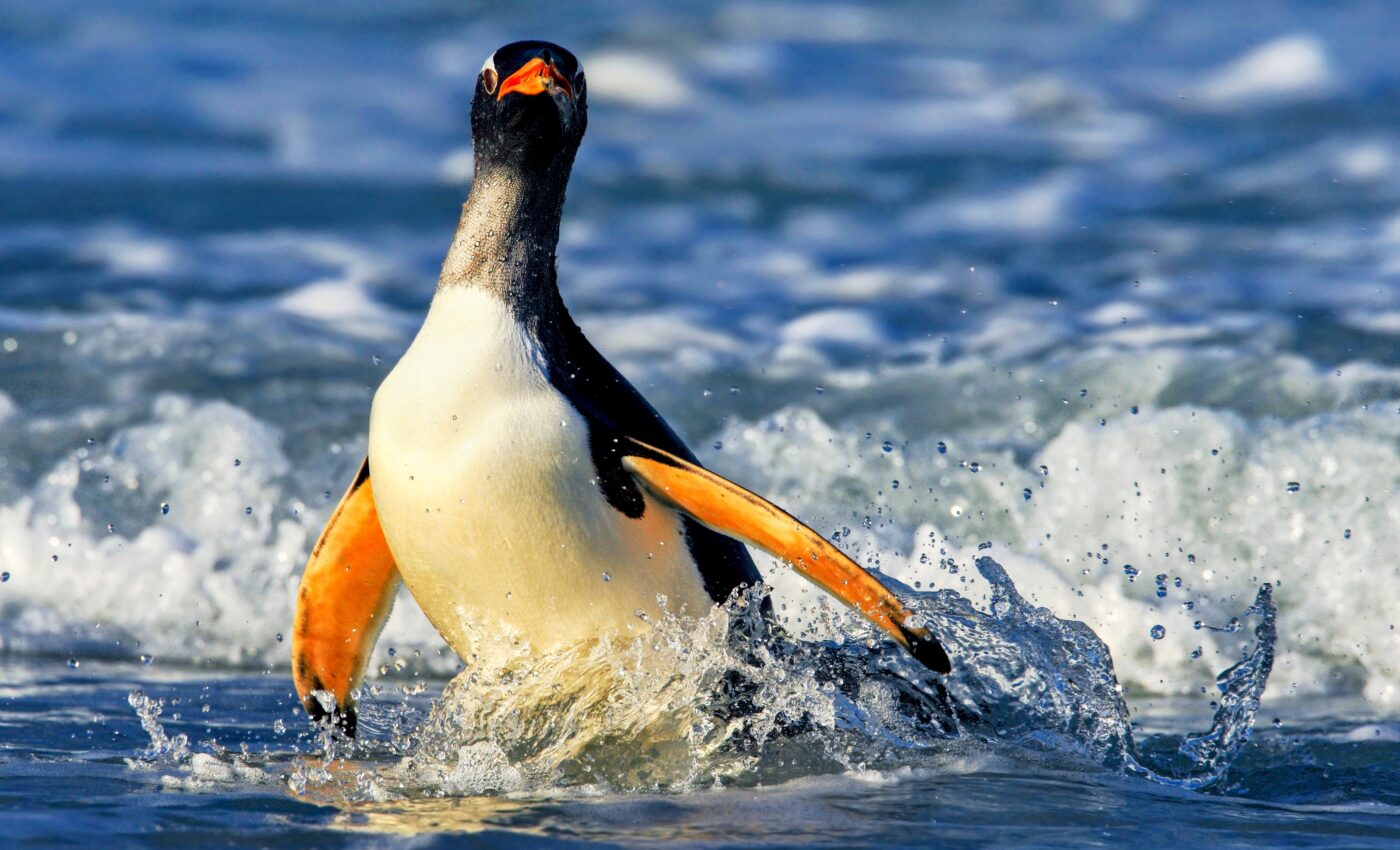
What makes the Gentoo penguin the world's fastest swimming bird?
In a groundbreaking study published in the journal Physics of Fluids, an international team of researchers has shed light on the impressive aquatic ability of the world’s fastest swimming bird, the Gentoo penguin. Insights from the study hold promise for the development of advanced aquatic vehicles and technologies.
The research, conducted by scientists from the Chinese Academy of Sciences and King Mongkut‘s Institute of Technology Ladkrabang, clarifies the physics behind the Gentoo penguin’s remarkable speed and maneuverability, revealing how their wings create forces and flow structures underwater.
The Gentoo penguin, known for its charming demeanor and waddle, is also a marvel of natural engineering. Its wings, which more closely resemble flippers, are comparable to airplane wings but adapted to suit a life submerged.
Secrets of gentoo penguin speed
Unlike the elongated wings of airborne birds, penguin wings are shorter, flatter, and clothed in scaly feathers. This unique design allows for superior efficiency and mobility underwater.
The key to the penguins’ underwater expertise lies in the dexterity of their wing feathering, which is the active adjustment of the angle of the wings to reduce resistance, in tandem with pitching and flapping.
Furthermore, the dense and short nature of the penguins’ feathers plays a vital role in this process as they can trap air between the skin and water, thereby minimizing friction and turbulence.
“Penguins’ superior swimming ability to start/brake, accelerate/decelerate, and turn swiftly is due to their freely waving wings. They allow penguins to propel and maneuver in the water and maintain balance on land,” explained study co-author Prasert Prapamonthon. “Our research team is always curious about sophisticated creatures in nature that would be beneficial to humankind.”
How the research was conducted
To decode the gentoo penguins’ aquatic acrobatics, the researchers devised a hydrodynamic model that simulates the forces and flows generated by the penguins’ wings.
This model incorporates information concerning the wings’ flapping and feathering. These metrics include amplitude, frequency, and direction.
The model also takes into account fluid parameters like velocity and viscosity. Using the immersed boundary method, the model was able to solve for the motion of the wing as well as the thrust, lift, and lateral forces.
The research team also introduced a novel parameter known as the angle of thrust. This parameter, which is determined by the angle of the wings, helps in comprehending how finned wings generate thrust. Essentially, thrust is governed by the angle of attack and the relative angle of the wings to the forward direction.
“We proposed the concept of angle of thrust, which explains why finned wings generate thrust: Thrust is primarily determined by the angle of attack and the relative angle of the wings to the forward direction,” explained Prapamonthon. “The angle of thrust is an important concept in studying the mechanism of thrust generated by flapping motion and will be useful for designing mechanical wing motion.”
Implications of the study
The implications of this research extend beyond just understanding the physics of penguins’ swimming abilities. The findings could be instrumental in the development of cutting-edge aquatic vehicles, offering a means to estimate propulsion performance swiftly and without incurring exorbitant experimental or computational costs.
Looking ahead, the research team has plans to further refine the model by investigating a more comprehensive 3D penguin model that incorporates different wing properties and motions such as starting, braking, turning, and even jumping in and out of the water.
More about Gentoo penguins
Gentoo penguins (Pygoscelis papua) are a species of penguin found in the Antarctic. They are easily recognizable due to their distinctive appearance: they have bright orange-red bills, white patches above the eyes that extend to the top of the head, and long tails, which are the most prominent among all species of penguins.
Gentoos make up the third largest penguin species, standing up to 35 inches tall and weighing around 11–18 lbs. The two larger species are the emperor penguin and the king penguin.
Gentoo penguins are also known for their fast swimming, reaching speeds up to 36 kilometers per hour (22 mph). They are excellent divers, capable of reaching depths of 200 meters (656 feet).
Their diet mainly consists of krill and fish. In terms of reproduction, Gentoos form breeding colonies, often on ice-free surfaces. Breeding pairs build a circular nest from stones, grass, moss, and feathers. Both parents incubate two eggs laid, and they share the responsibility of chick-rearing.
Gentoos are considered Near Threatened by the International Union for Conservation of Nature (IUCN). The major threats to their populations include climate change, which affects their primary food sources, and human disturbances such as tourism, fishing, and pollution.
—-
Check us out on EarthSnap, a free app brought to you by Eric Ralls and Earth.com.













